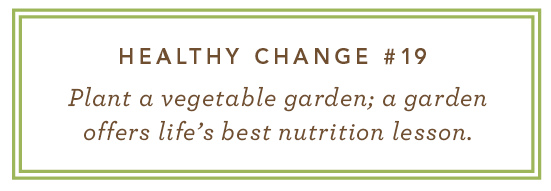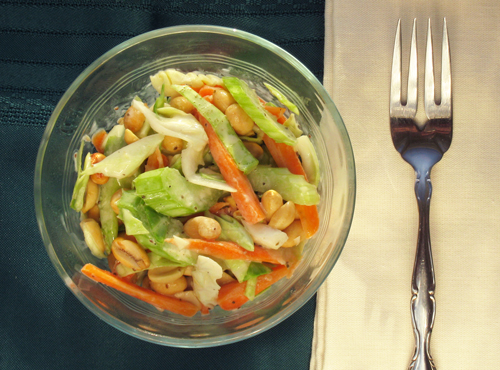My Father's Garden

The quick answer: Want to understand the mystery of (your) life? Plant and tend a garden.
_______________________________________________________________________
My Father’s Garden
My father grew a beautiful vegetable garden in the deep lot behind our home. He had always done this; he had a garden in his 90th year, before he left. There were fruit trees on one side, a shaded area for berry vines, a trellis to grow sweet peas for my Mother, wire cages for tomato plants, and raised beds for vegetables like carrots, onions, squash, and cantaloupes. In the spring he would plant corn, one section each week to extend the time of ripening. He loved fresh corn-on-the-cob but it had to be fresh; he wouldn’t pick the corn until Mother had the water boiling. Do you know how at the end of summer, the tomato plants are full of almost ripe tomatoes that aren’t going to fully ripen? With those we would make a family favorite, Aunt Kate’s Chili Sauce. I’ll share the recipe with you one day.
Unlike myself, my Father had a beautiful voice. One song was a love ballad of his time—I love You Truly—that he would sing to Mother when they were getting ready to go out. When I wrote our family memoir I titled it, I Love You Truly: The Lessons of Our Lives. Those lessons covered the gamut of our joys and sorrows. Our family paid a high price for some of those lessons so I thought it important they be saved for our descents in a book.
When I wrote the memoir I asked Father the “why question.” Here’s his thoughtful response: Why do I garden? Why do you breathe? I find peace from life’s cares in my garden. A person needs a place for deep thinking, the kind of on-your-knees, hands-in-the-dirt pondering where life’s lessons are best learned. I think about my children and the decisions they’ve made, about the people I’ve known, places I’ve been, the dances I took Nina (our Mother) to. But mostly I think about my life, teaching myself from the pulpit of my memory. My garden really isn’t work, for while I toil the birds fly about singing, the wind makes comforting sounds as it blows through the trees, and the sun warms my back. Later, when the plants sprout in their rows it’s very satisfying.
Over the years the ten children grew up and left home. It became a ritual when we returned to greet whoever was in the house and then go to the backyard and admire the garden. Often Father would be there, ready to hear the news of your life. Once I wrote a silly story for children, about a visiting grandchild who wakes up in the night and hears noises coming from Father’s garden. The child ventures out to the garden and discovers that on moon-lit nights the various vegetables leave their beds to form a marching band, led by the gnarled old apricot tree that looks surprisingly like Father. I’ll share one verse of the song that vegetable marching band played; you’ll know the melody so sing along:
Seventy-six cornstalks led the big parade,
With a hundred-and-ten cantaloupes close at hand,
They were followed by rows and rows of the finest vegetables,
The cream of Father’s marching band.
Well, I said it was a silly children’s story but it does touch on the magic every garden offers. The grandchildren loved Father’s garden and delighted in vegetables eaten directly from the vine. It’s an American tragedy that children grow up hating vegetables, but I could see these kids loved the vegetables they picked and ate. Gardens, of course are about more than the harvest, though they do yield the healthiest food you can eat. And they’re good exercise. But even more, they teach reverence for food in the way it was originally created. Which brings us to this week’s Healthy Change:

Comment: Please comment on your gardening experience. Whether you do it for truly local and organic food, to save money, or just for the joy of gardening, a garden is one of the best uses of your time.
 Friday, May 17, 2013 at 1:24PM | by
Friday, May 17, 2013 at 1:24PM | by  Skip Hellewell |
Skip Hellewell |  9 Comments |
9 Comments |  6 References | | in
6 References | | in  healthy change,
healthy change,  vegetables |
vegetables |  Email Article
Email Article 




















